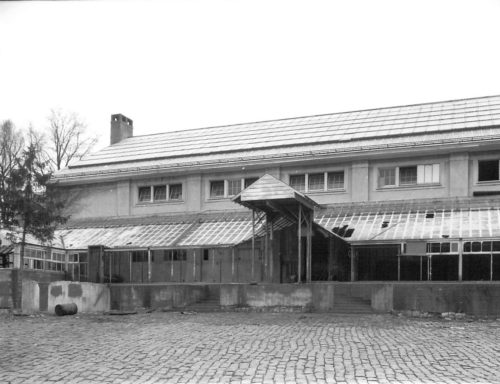
CWP Blog | CWP
Discussions with Deb: How the Dayton Project Became a DOE Facility
July 8, 2020
July 8, 2020
CWP
CWP Blog
In 2010, I got a call from an upset claimant. Her Part B claim had been approved but her Part E claim had been denied because the site she worked at, the Dayton Project, was classified as an Atomic Weapons Employer (AWE) facility rather than a Department of Energy (DOE) facility.
Mary Smith (not her real name) was a delightful woman who told a horrifying story. During the Second World War she worked as a laboratory technician at one of the Dayton Project sites setting up experiments. She was working in a lab when she heard an explosion and ran into the hall to see a coworker collapsed in the hall screaming with pain as polonium mixed with acid had spewed onto her face and body. Mary began helping her remove her contaminated clothing. The women realized they were in trouble when Mary looked up and saw the chemists in a nearby lab looking at them through the door glass rather than coming to their aid. One of the chemists ignored the advice to stay away from the contamination, left the room and began pouring a 5-gallon bottle of distilled water over the women to dilute the acid. This accident left Mary with health problems for the rest of her life.
As you know, EEOICPA is complicated. One of the obstacles to Mary’s Part E claim was that AWE sites are only eligible for Part B claims, not Part E claims while DOE sites are eligible for both. I knew a little about the Dayton Project and its relationship to Mound Laboratory (A DOE site) since my father and some of his colleagues had started work at the Dayton Project and then moved into Mound. I thought there was a good chance that the Dayton Project should be classified as a DOE rather than AWE site. But how would I prove it?
I started researching documents at the Mound Museum and found compelling evidence that the Dayton Project and Mound were one and the same entity. I sent this to the Department of Labor in late 2010. Unfortunately, this wasn’t enough.
I did a Freedom of Information Act request for the contract Mound and the Dayton Project were working under. The difference between whether a site is AWE or DOE can hinge on many things but one solid proof is who owned the property. I went to the Montgomery County Courthouse and started researching the properties involved. Here I hit the jackpot! It turned out that the War Department had taken the Dayton Project property by eminent domain in 1944! I ordered the documents verifying this from the courthouse.
I sent the new information to the Department of Labor. DOL agreed with my evidence and reclassified the Dayton Project as a DOE facility in 2012. A few weeks later Mary filed her Part E claim which was quickly approved. By this time, Mary’s health had deteriorated but her spirit remained vibrant. We struggled to find a doctor who could do an impairment rating for her, as she wanted to have it done in person but did not want to travel. I left for vacation.
While on vacation I got a phone call from Mary. She started it by saying, “Now I don’t want you to worry. I am not in any pain but my doctor says I only have a few weeks left.” This was just like her–to worry about how I would react to her impending death rather than complain. She sounded so normal on the phone that I doubted her timeline but when someone says something like this you have to take them seriously. I ended my vacation and drove home.
I contacted her claims examiner and reported the claim was terminal. I found a doctor who could do an impairment rating by phone along with Mary’s nurse. The claims examiner did not move the claim and Mary’s health deteriorated severely in a week. She was so ill at this point that when her impairment rating was done it came back at 100%. After a week of the claims examiner doing nothing, I contacted the National Office and explained the situation. The person I spoke with took the situation seriously and moved heaven and earth to get Mary paid before she died. The money hit her bank account for less than 24 hours before her death. She had wanted money to provide for her disabled child after her death. I was grateful that I was able to help her do this.
Last week my husband asked how many people had benefited from the Dayton Project becoming a DOE facility. I had never thought to look but I checked the DOL statistics page and found that 23 Part E cases had been approved, with 17 workers being paid to a tune of $2,410,000 to date.
